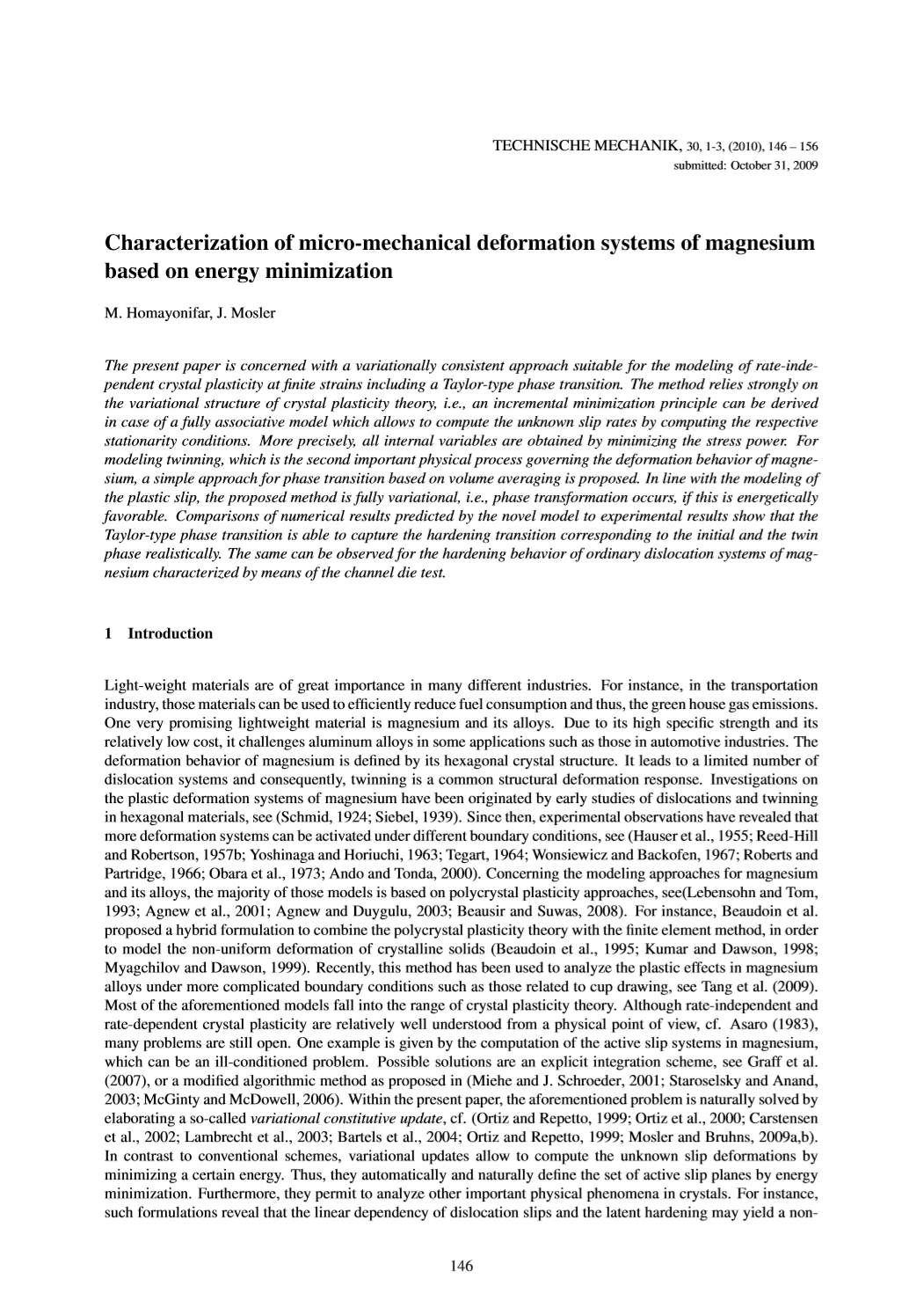Characterization of micro-mechanical deformation systems of magnesium based on energy minimization
Abstract
The present paper is concerned with a variationally consistent approach suitable for the modeling of rate-independent crystal plasticity at finite strains including a Taylor-type phase transition. The method relies strongly on the variational structure of crystal plasticity theory, i.e., an incremental minimization principle can be derived in case of a fully associative model which allows to compute the unknown slip rates by computing the respective stationarity conditions. More precisely, all internal variables are obtained by minimizing the stress power. For modeling twinning, which is the second important physical process governing the deformation behavior of magnesium, a simple approach for phase transition based on volume averaging is proposed. In line with the modeling of the plastic slip, the proposed method is fully variational, i.e., phase transformation occurs, if this is energetically favorable. Comparisons of numerical results predicted by the novel model to experimental results show that the Taylor-type phase transition is able to capture the hardening transition corresponding to the initial and the twin phase realistically. The same can be observed for the hardening behavior of ordinary dislocation systems of magnesium characterized by means of the channel die test.





